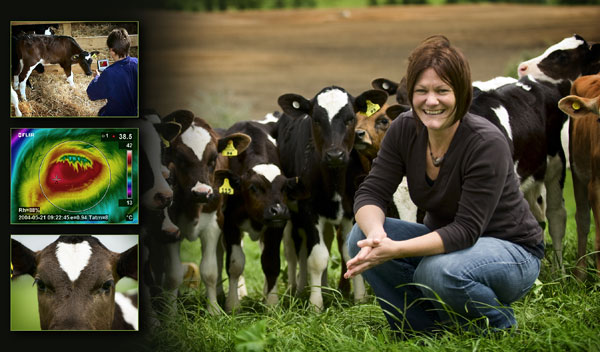Infrared tech helps farmers
Farmers now have an extra set of eyes and ears to help monitor the health of their herds thanks to infrared camera technology being developed at AgResearch.
Farmers now have an extra set of eyes and ears to help monitor the health of their herds thanks to infrared camera technology being developed at AgResearch.
The camera measures an animal’s temperature and gives farmers a thermal image they can use to see the health and well-being of their livestock.
Dr Jim Webster, animal welfare specialist at AgResearch, said overseas consumers are concerned about the welfare of animals so infrared technology can give New Zealand exporters a competitive edge.
“It’s an important part of what they think about when they think about the quality of food,“ he said. “When they’re in the supermarket buying food they are also thinking about how well it was produced and the impact on the environment.”
The infrared camera is similar to a handycam and can be used to detect a host of health conditions in animals.
“It can detect a wide range of things so it’s not just set up for one particular ailment,” he said. “Anything that would affect an animal’s temperature pattern it can pick up.”
AgResearch is still in the research phase but field tests show a lot of potential in the technology.
“It can detect changes much earlier,” he said.
He said while an experienced stockperson can see an animal when it’s sick infrared technology is so sensitive it can pick up any problems much earlier.
” The camera might be situated in the roof watching the dairy cows as they step onto the rotary platform. When the software detects an animal has a change in temperature it will alert the farmer.”
The technology is non-invasive Dr Webster said and it also has the potential to save the farmer money.
“You don’t have to take a blood sample or rectal temperature so it’s not stressing the animals out itself and it’s not using any disposable products, so it’s cheap.”
Infrared technology is not new but rapid developments in the miniaturisation of the cameras are making it viable for use in the farming sector.
“Early infrared cameras were huge and had to be cooled with liquid nitrogen but developments in infra-red technology means the cameras don’t need to be cooled and can be made far smaller for a fraction of the cost.”
The cameras are commercially available but AgResearch is still developing its potential for the New Zealand agricultural sector and Dr Webster hopes farmers will see the benefits of an infra-red system on their farm.
“I don’t think farmers want something that’s just going to take up time. They want something that is going to give them an answer and if that answer will benefit their production, the health of the animals and the welfare of the animals and it’s at a cost that they can see will pay off then I think they would be interested.”
AgResearch’s infrared camera is on show in the Pavilion.




